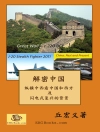In this work of impressive scholarship, Sheldon Pollock explores the remarkable rise and fall of Sanskrit, India’s ancient language, as a vehicle of poetry and polity. He traces the two great moments of its transformation: the first around the beginning of the Common Era, when Sanskrit, long a sacred language, was reinvented as a code for literary and political expression, the start of an amazing career that saw Sanskrit literary culture spread from Afghanistan to Java. The second moment occurred around the beginning of the second millennium, when local speech forms challenged and eventually replaced Sanskrit in both the literary and political arenas. Drawing striking parallels, chronologically as well as structurally, with the rise of Latin literature and the Roman empire, and with the new vernacular literatures and nation-states of late-medieval Europe,
The Language of the Gods in the World of Men asks whether these very different histories challenge current theories of culture and power and suggest new possibilities for practice.
Table des matières
List of Maps
Preface and Acknowledgments
Introduction
Culture, Power, (Pre)modernity
The Cosmopolitan in Theory and Practice
The Vernacular in Theory and Practice
Theory, Metatheory, Practice, Metapractice
PART 1. THE SANSKRIT COSMOPOLIS
Chapter 1. The Language of the Gods Enters the World
1.1 Precosmopolitan Sanskrit: Monopolization and Ritualization
1.2 From Resistance to Appropriation
1.3. Expanding the Prestige Economy of Sanskrit
Chapter 2. Literature and the Cosmopolitan Language of Literature
2.1. From Liturgy to Literature
2.2. Literary Language as a Closed Set
2.3. The Final Theory of Literary Language: Bhoja’s Poetics
Chapter 3. The World Conquest and Regime of the Cosmopolitan Style
3.1. Inscribing Political Will in Sanskrit
3.2. The Semantics of Inscriptional Discourse: The Poetics of Power, Malava, 1141
3.3. The Pragmatics of Inscriptional Discourse: Making History, Kalyana, 1008
Chapter 4. Sanskrit Culture as Courtly Practice
4.1. Grammatical and Political Correctness: The Politics of Grammar
4.2. Grammatical and Political Correctness: Grammar Envy
4.3. Literature and Kingly Virtuosity
Chapter 5. The Map of Sanskrit Knowledge and the Discourse on the Ways of Literature
5.1. The Geocultural Matrix of Sanskrit Knowledge
5.2. Poetry Man, Poetics Woman, and the Birth-Space of Literature
5.3. The Ways of Literature: Tradition, Method, and Stylistic Regions
Chapter 6. Political Formations and Cultural Ethos
6.1. Production and Reproduction of Epic Space
6.2. Power and Culture in a Cosmos
Chapter 7. A European Countercosmopolis
7.1. Latinitas
7.2. Imperium Romanum
PART 2. THE VERNACULAR MILLENIUM
Chapter 8. Beginnings, Textualization, Superposition
8.1. Literary Newness Enters the World
8.2. From Language to Text
8.3. There Is No Parthenogenesis in Culture
Chapter 9. Creating a Regional World: The Case of Kannada
9.1. Vernacularization and Political Inscription
9.2. The Way of the King of Poets and the Places of Poetry
9.3. Localizing the Universal Political: Pampa Bharatam
9.4. A New Philology: From Norm-Bound Practice to Practice-Bound Norm
Chapter 10. Vernacular Poetries and Polities in Southern Asia
10.1. The Cosmopolitan Vernacularization of South and Southeast Asia
10.2. Region and Reason
10.3. Vernacular Polities
10.4. Religion and Vernacularization
Chapter 11. Europe Vernacularized
11.1. Literacy and Literature
11.2. Vernacular Anxiety
11.3. A New Cultural Politics
Chapter 12. Comparative and Connective Vernacularization
12.1. European Particularism and Indian Difference
12.2. A Hard History of the Vernacular Millennium
PART 3. THEORY AND PRACTICE OF CULTURE AND POWER
Chapter 13. Actually Existing Theory and Its Discontents
13.1. Natural Histories of Culture-Power
13.2. Primordialism, Linguism, Ethnicity, and Other Unwarranted Generalizations
13.3. Legitimation, Ideology, and Related Functionalisms
Chapter 14. Indigenism and Other Culture-Power Concepts of Modernity
14.1. Civilizationalism, or Indigenism with Too Little History
14.2. Nationalism, or Indigenism with Too Much History
Epilogue. From Cosmopolitan-or-Vernacular to Cosmopolitan-and-Vernacular
Appendix A
A.1 Bhoja’s Theory of Literary Language (from the Srngaraprakasa)
A. 2 Bhoja’s Theory of Ornamentation (from the Sarasvatikanthabharana)
A.3 Sripala’s Bilpank Prasasti of King Jayasimha Siddharaja
A.4 The Origins of Hemacandra’s Grammar (from Prabhacandra’s Prabhavakacarita)
A.5 The Invention of Kavya (from Rjaekhara’s Kavyamimamsa)
Appendix B
B.1 Approximate Dates of Principal Dynasties
B.2 Names of Important Peoples and Places with Their Approximate Modern Equivalents or Locations
Publication History
Bibliography
Index
A propos de l’auteur
Sheldon Pollock is William B. Ransford Professor of Sanskrit and South Asian Studies at Columbia University, and former George V. Bobrinskoy Distinguished Service Professor at The University of Chicago. His previous publications include Literary Cultures in History: Reconstructions from South Asia (California, 2003), Cosmopolitanism (2002, with Homi Bhabha et al.), and The Ramayana of Valmiki, Volume III: Aranyakanda (1991), and Volume II: Ayodhyakanda (1986).












